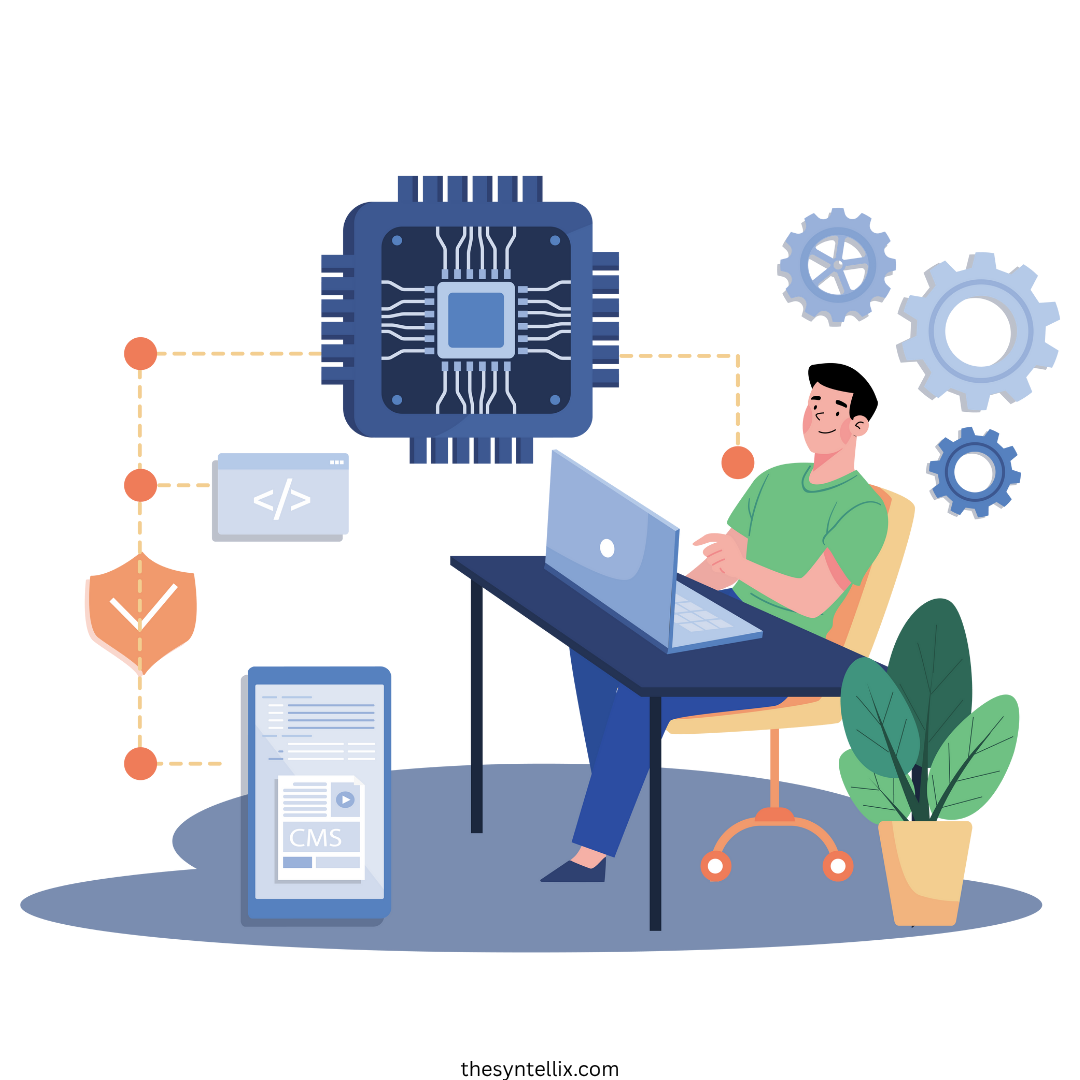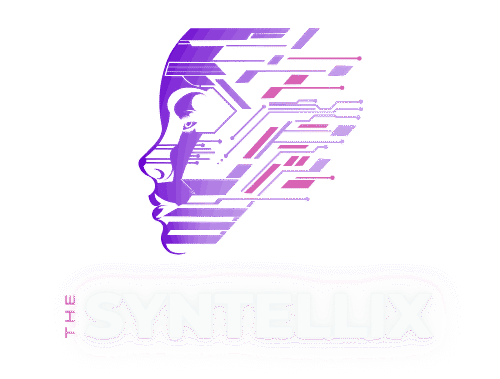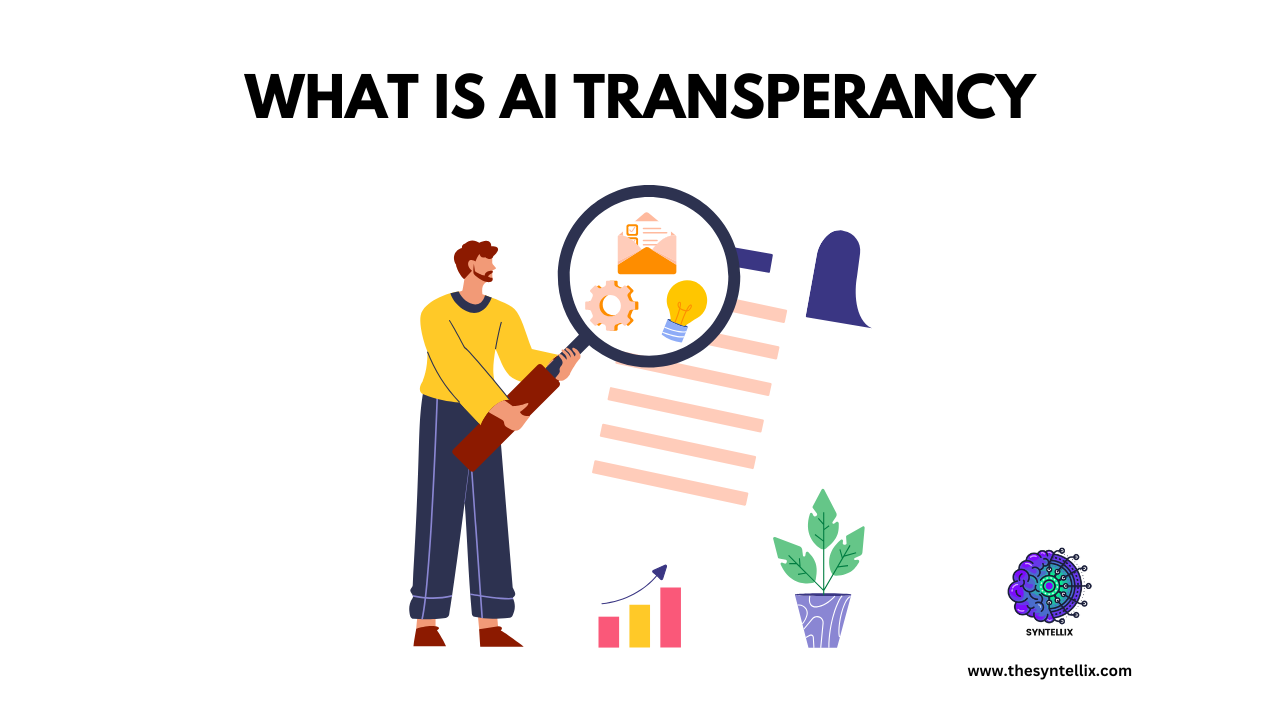Put yourself a question, would you trust a doctor who refuses tell how he diagnose the disease? your answer will be definitely no. Same as the case with AI, if the AI can not explain why it rejected your resume, why your loan application got rejected, you will definitely can not trust AI.
That’s where the concept of AI transparency comes in. In todays world where AI is used in almost every industry, the AI transparency have become an important part of responsible technology.
In this blogpost we will explore what is AI transparency, why it matters in responsible technology, what are the challenges in achieving AI transparency. Lets dive in!
What is AI Transparency?
AI transparency means how an artificial intelligence system works, how it uses our data, how AI systems make choices. AI transparency makes it possible for users to know how an AI systems was created or trained with data and how they make decisions.
People take AI transparency and explainability as the same things, but there is a clear difference between both. Explainability tells the user how an AI system made specific decision. It is about to tell people why 1+1 =2.
On the other hand Transparency tells the people how the AI model is trained, how it takes and uses the data, how an AI monitor the data, what risks it may carry if the certain decision goes wrong.
You can think of Explainability as an AI which can only answer but can not justify, On the other hand, Transparency tells the whole story about the decisions from start to end.
Transparency builds trust, fairness, and accountability. When people understands what’s going on behind AI, they will trust AI instead of being scared.
Businesses and governments will feel secured because their data is being used ethically. Without transparency, an AI can create biases, harm and misuse of data. In case of any harm, businesses can not be able to fix anything. So, Transparency is essential for ethical responsible technology.
What Are The Three Levels of AI Transparency
AI transparency is not just about showing the code or explaining how the model works. It actually happens on three different levels, and understanding each level can help us to build better, fairer, and more trustworthy AI systems.
Let’s break it down.
1. Algorithmic Transparency: What’s Happening Inside the AI?
This is the first and most technical level of transparency. It is all about what is going on under the hood.
When we talk about algorithmic transparency, we are asking:
- How does the AI model work?
- What data is it trained on?
- How does it make decisions?
Imagine you are using an AI tool to predict loan approvals. Algorithmic transparency helps us to understand why it said “yes” or “no.” Was it because of your credit score, income, or something else?
To make this possible, developers often use tools from Explainable AI (XAI). These tools break down complex “black-box” models like neural networks into something humans can understand. Or they might use simpler models that are more transparent by design.
This type of transparency mainly helps:
- AI developers
- Data scientists
- Regulators and auditors
They need to verify that the system is fair, unbiased, and legally compliant.
2. Interaction Transparency: What Does the AI Show Users in Real Time?
This level is more focused on the user. It is about how the AI behaves during everyday use and how clearly it communicates with you.
Let’s say you are chatting with an AI assistant like a virtual tutor or support bot. Interaction transparency makes sure you understand:
- What the AI can and can’t do.
- Why it gave a certain answer.
- How confident it is in that answer.
This kind of feedback builds trust. It helps users to feel in control and reduces the chances of being misled by the system.
Some examples of interaction transparency include:
- A chatbot saying, “I’m not sure about that. Would you like to speak to a human?”
- A recommendation engine showing, “You got this suggestion because you watched X and Y.”
This level is critical for:
- General users.
- Designers.
- Product teams.
It’s about giving people a clear picture while they interact with the AI.
3. Social Transparency: How Does AI Fit Into the Bigger Picture?
Now let’s zoom out. Even if an AI system is technically clear and user-friendly, we still need to ask:
- Who built this AI?
- What are the ethical rules around it?
- What happens when something goes wrong?
Social transparency deals with the larger systems—like laws, ethics, policies, and social expectations.
For example, if an AI is being used in hiring, people want to know:
- Is it fair to all groups?
- Can someone challenge the decision?
- What rights do candidates have?
This level ensures that AI is not just working well—it’s also being used responsibly. It includes things like:
- Transparency reports from companies.
- Government regulations.
- Ethical AI guidelines.
It matters most for:
- Policymakers.
- The general public.
- Advocacy groups.
Social transparency helps society to decide where and how AI should be used—and how to hold people accountable.
Why These Three Levels Matter
No single level can build trust on its own. When combined, these three levels give a full picture of transparency:
- Algorithmic shows how AI works.
- Interaction explains what it’s doing in real time.
- Social places AI in a broader, ethical context.
By thinking in these layers, AI creators can design systems that are not just smart—but also safe, clear, and respectful.
California AI Transparency Act
The California AI Transparency Act is a proposed law designed to make AI systems more open and fair, especially when they impact people’s lives. It requires companies to inform users when AI is involved in major decisions that directly impacts.
If AI affects a person directly, businesses must explain how the decision was made and provide human support if needed. This gives people the right to know when they’re being judged by an algorithm and the ability to question it.
Key parts of the law include:
- Clear notices when AI is used in decisions that impact people.
- Explanations of how AI systems work and make choices.
- Human review of decisions made by AI, especially if challenged.
- Risk assessments to check for bias or harm.
- Documentation to keep AI systems accountable and transparent.
This law aims to protect consumers, encourage fairness, and make sure companies use AI responsibly.
Those Who Adopted The AI Transparency
1. Google’s AI Principles (Social + Algorithmic Transparency)
Source: Google’s AI Principles
Transparency Type: Social & Algorithmic.
Google publicly shares its AI ethics guidelines to ensure transparency at a social level. These principles emphasize:
- Avoiding bias
- Ensuring safety
- Being accountable
- Sharing how their AI models (like Gemini) work.
They also release technical documents and research papers explaining their algorithms that are contributing to algorithmic transparency.
For example, their Model Cards describe how their AI models perform across different use cases and demographics.
2. OpenAI (Interaction + Algorithmic Transparency)
Source: ChatGPT System Cards and Usage Policies
Transparency Type: Interaction & Algorithmic.
OpenAI offers system cards that explain how ChatGPT behaves, what training data was used, and what safety measures are in place.
Users can see when ChatGPT refuses to answer certain questions or clarifies uncertainty, this supports interaction transparency.
They also publish research and document updates to their models, contributing to algorithmic transparency.
IBM Watson (All Three Levels)
Source: IBM Watson OpenScale
Transparency Type: Algorithmic, Interaction, and Social.
IBM Watson is one of the few enterprise AI platforms that addresses all three levels of transparency:
- Algorithmic: Watson OpenScale monitors model performance and explains decisions using tools like LIME and SHAP.
- Interaction: Users get feedback on why a recommendation was made or whether data was missing.
- Social: IBM has clear responsible AI guidelines, focuses on explainability and bias mitigation, and engages in public dialogue on AI ethics.
These examples show that real organizations are taking AI transparency seriously not just to follow the rules, but to earn user trust and build better systems.
Why AI Transparency Is Important
Nowadays, as we know AI covers almost all the sectors like healthcare, hiring, finances etc. So, if AI hides the decision making processes it can lead to serious issues.
Some real-world impacts of AI transparency are:
Healthcare: AI is being used in healthcare industry for so long. It helps the doctors to diagnose the disease. Healthcare is a very serious department, if AI make unclear decisions then it can directly impact patients lives. So, AI must be transparent in order to be used.
Finances: Banks use AI to detect fraudulent transactions from hundreds of transactions. AI systems in banks analyze thousands of transactions and find the fraudulent one. But, if the AI is not transparent the customers can find their accounts frozen without clear explanations.
Hiring: A lot of organizations or companies use AI to hire candidates. But if the AI is trained on biased data and is not transparent than qualified candidates are overlooked without clear justification.
Building People Trust
If the AI is transparent than people will trust AI in every sector. But if it hides its decisions than after some times when the people will get some more knowledge about Transparency they will definitely be scared of AI. Because they do not know if their data is being treated ethically or not.
Risks Of Black Box Systems
Artificial intelligence systems that operates as a “Black Box”, means their internal working is hidden, probably have biases in their training data. Which leads towards unethical decisions.
Legal risks of AI
The AI systems should follow the rules set by government. If the AI takes personal data without informed consent, it will violate legal government laws.
AI Transparency Requirements
The transparent AI system requires the following:
Disclosure: It means that the users should know if they are talking with human or an AI system. For example, if there is a chatbot behind the customer service the user should know he is talking with chatbot. This will build trust and avoid confusions.
Explainability: AI system should explain the way it made the specific decision. For example, if it diagnose the disease it should give clear reason.
Fairness Audits: The AI system should be regularly checked to assure that it is biased free. If it contains biases then it will make unfair decisions.
Data Transparency: AI should be able to tell the user which kind of data is being used and stored by AI with clear consent to prevent misuse.
Regulatory Compliance: AI organizations should abide by the laws like EU AI Act that requires transparency in high risk AI systems.
In short, AI transparency is not just about opening the black box, but it should give the user the right to understand, question or even challenge the AI decisions.
Conclusion
In 2025, AI transparency is not just optional to adapt but it is the price of entry for ethical innovation. From saving lives in hospitals to rebuilding trust in finance, open algorithms prove that technology can empower without obscuring. As users, demanding transparency ensures AI remains a tool for good, not a gatekeeper of secrets.
Call to Action:
Support transparent AI by asking “How does this work?” before adopting any system. Explore the Partnership on AI’s guidelines to stay informed.
FAQs
Q: What is AI transparency?
A: AI transparency means designing systems that clearly explain their decisions, fostering trust and accountability.
Q: Can AI ever be 100% transparent?
A: While full transparency is ideal, complex models require trade-offs. Tools like XAI bridge the gap between accuracy and explainability.
Q: How does the EU enforce AI transparency?
A: The EU AI Act mandates audits, model cards, and user explanations for high-risk AI, with fines up to 6% of global revenue.
Useful Resources
To learn more about AI Ethics visit my website.

Stay ahead of the curve with the latest insights, tips, and trends in AI, technology, and innovation.

